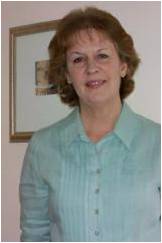
Dalen Weathersby

King Barnes
YouTubers, Marina Abramovic, and the Art of Reaction
Posted by Sep 06, 2018

Dalen Weathersby

King Barnes
The High Museum of Art’s Teen Team is a dynamic group of rising high school juniors and seniors who help create and host public programs at the High, including our teen-only Teen Night and monthly free admission day, Second Sundays. The Teen Team program is a paid, year-round commitment, and the teens are considered museum employees. They explore the museum’s collection and special exhibitions, meet museum staff and local artists, and get the inside scoop on museum careers through hands-on experience. The following is a collaborative reflection from two recent Teen Team members, both rising seniors in Atlanta high schools.
Read More












 Nina Ozlu Tunceli
Nina Ozlu Tunceli

 Ann-Laura Parks
Ann-Laura Parks

 Chris McLeod
Chris McLeod

 Jim McCarthy
Jim McCarthy

 Jeff Poulin
Jeff Poulin

 Over the past few weeks, a new face has been popping up at street fairs and food festivals across the country: an Amazon “food truck,” doling out Kindle Fires alongside neighboring trucks’ hot dogs, hamburgers, and artisanal cupcakes.
Over the past few weeks, a new face has been popping up at street fairs and food festivals across the country: an Amazon “food truck,” doling out Kindle Fires alongside neighboring trucks’ hot dogs, hamburgers, and artisanal cupcakes.
 Sean King
Sean King

 Ron Evans
Ron Evans

 Beth Malone
Beth Malone


 David Dombrosky
David Dombrosky

 Rachel Ciprotti
Rachel Ciprotti

 Aaron Bisman
Aaron Bisman

 Rachel Grossman
Rachel Grossman










